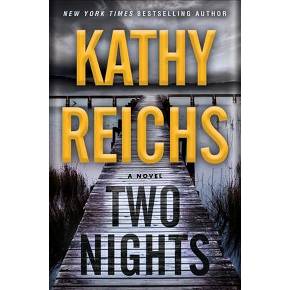
Author: Elizabeth
Noble
Title: Between a Mother and Her Child
Genre: Women’s Lives and Relationships
Publication
Date: 2013
Pages: 448
Geographical
Setting: London, England
Time
Period: Present day
-----------------------------------------------------------------------------
Plot Summary
Isolating herself and others, Maggie Barrett grieves the
unexpected death of her oldest son, Jake, pushing away her husband, Bill and
teen daughter, Aly in the process. Through
her trusted sister, Liv’s unconventional answer to an ad, she enlists the help
of Kate Miller, a “rent-a-granny” companion for the struggling household. Kate seems to be the healer of all wounds,
from troubled Aly and estranged Bill to desperate Maggie. Invading privacy in search of truth, Aly
discovers Kate’s secret and as the family “fixer” tries to heal her beloved
rent-a-granny, Kate.
Subject Headings
Sons, Death, Bereavement, Marriage, Fiction
Appeal
Tone/ Mood
Witty and deep:
Elizabeth Noble deeply explores every angle of the nuclear family’s
division. The reader feels the character
weaknesses, nervousness and excitement at each phase of the relationships’
study, “…authors, by their intention and direction, create a range of books
that deal with similar, always difficult and emotional topics,” (Saricks
157). Saricks goes on to explain that
while some authors provide only a “casual look at an issue,” others explore
issues and possibilities (157). Noble
details Maggie’s anger and then warmth with
Bill, her frustration and then closeness with Aly, her love of her sister and closeness
with Stan. “Maggie knew Aly had
withdrawn herself emotionally from her mother.
And, for now, it was easier not to fight it, however much it hurt,”
(Noble 33).
Noble adds sarcasm and light humor to intense situations,
strengthening the emotional link between the readers and the characters, while
providing a very personal look inside the characters’ lives, “Don’t make me
[Aly] laugh. I’m trying to pee on a very
narrow stick [pregnancy test] here….” (Noble 298).
Characterization
This genre explores the life of female protagonist and her
relationships (Saricks 157): Between a
Mother and Her Child explores the life of fragile Maggie, the protagonist,
and her complex relationship with her distant daughter, challenged son, beloved
sister, estranged husband, live in granny Kate and boyfriend. Throughout the trials and drama, Maggie
learns how to love her children in the face of disaster and reassure them in
the midst of unavoidable change, “The love tween a mother and her child, or
between a father and his child, cannot ever, ever be changed. Not by anything…nothing,” (Noble 379).
Story Line
“Novels in this genre examine themes of concern special to
women,” (Saricks 158). In this domestic
drama, Elizabeth Noble celebrates the family life of Maggie and her children
through grieving the death of Jake, accepting the birth of Carrie’s baby [Bill’s
new girlfriend], , “Our [Maggie and Bill] lives are not connected in this way
anymore…” (Noble 311), and fearing Aly’s possible pregnancy, “I [Maggie] could
never hate you, silly girl. Little thing
called unconditional love,” (Noble 293).
Style/ Language
Conversational dialogue and the inclusion of emails and
letters, aide in telling the personal story of the central characters, (Saricks
156). Noble uses Liv’s bouncy, energetic
character to lighten the mood; upon arrival from Australia, Live declares that
she’s, “Smelly, knackered and starving” (Noble 62). Aly and her boyfriend, Ryan,
correspond almost exclusively through emails
(Noble 102) and Kate writes a heart-felt letter to her disconnected
daughter, Rebecca, expressing regret and hope, “I’m [Kate] writing for the
first time in a long time because I hope that maybe there’s a chance you feel a
little differently about me and about
what has happened between us,” (Noble 355).
Read Alikes
Jolene and Michael, in a fragile12- year marriage, are
forced to endure Jolene’s tour of duty to Iraq.
Michael, angry that Jolene has been deployed, leaving him to juggle
parenthood with his legal practice, begins to understand all that he has taken
for granted when Jolene’s helicopter crashes.
Similar to Between a Mother and
Her Child, the protagonist in Home Front
must rebuild herself and her relationships following disaster.
The
Bright Forever (2006) by Lee Martin
The Mackey family, glassworks owners and envied in their
small Indiana town for their wealth and good looks encounter unspeakable
tragedy when their nine year old Katie Mackey rides her bike to the library,
but never returns. In a community of
shady neighbors with questionable histories, Katie’s older brother desperately
tries to gain his father’s praise while seeking the truth behind Katie’s death. Similar to Between a Mother and Her Child, in The Bright Forever, a family is torn apart with the death of their
young child and a sibling struggles to mend the wounds.
Russell Green has a seemingly perfect life; a beautiful
wife, loving young daughter, successful career and large home, until,
unexpectedly, Russell finds himself thrown into the role of single parenthood
and jobless. Like Between a Mother and Her Child, Two
By Two is a story of a family adjusting to extreme change and the ever
powerful unconditional love.
Works Cited
Noble, Elizabeth.
Between a Mother and Her Child, Berkley Books, 2012.
Saricks, Joyce. The
Readers’ Advisory Guide to Genre Fiction, American Library Association,
2009.










